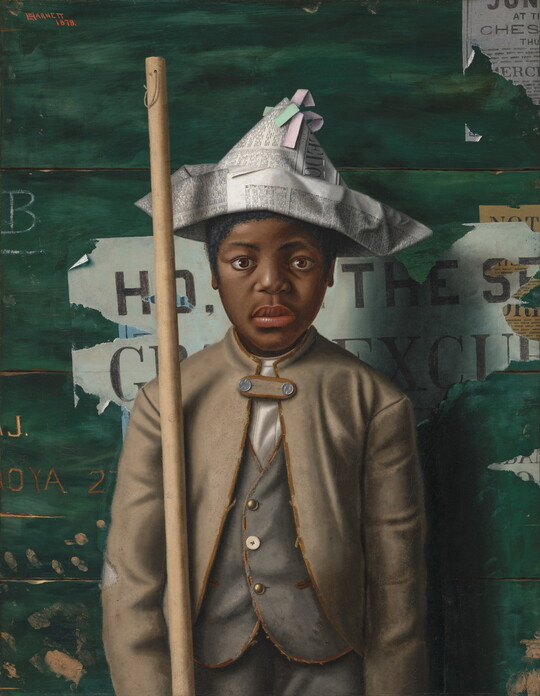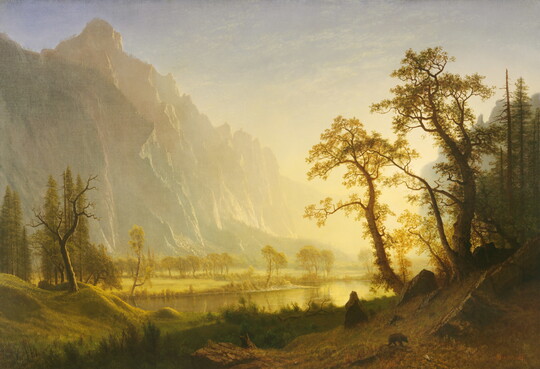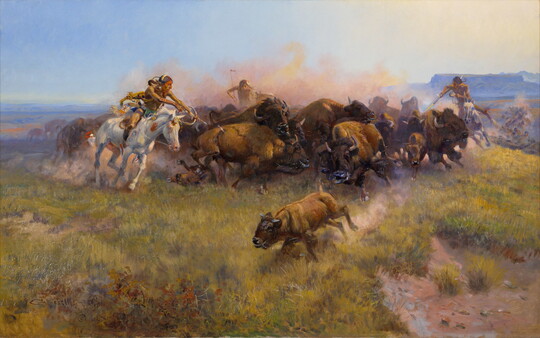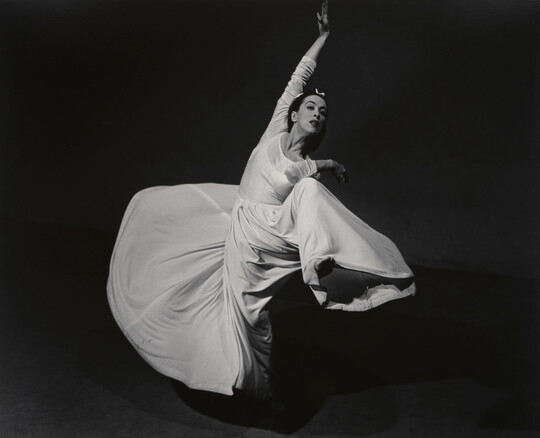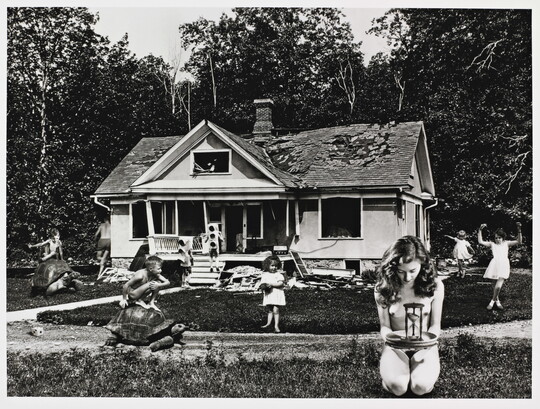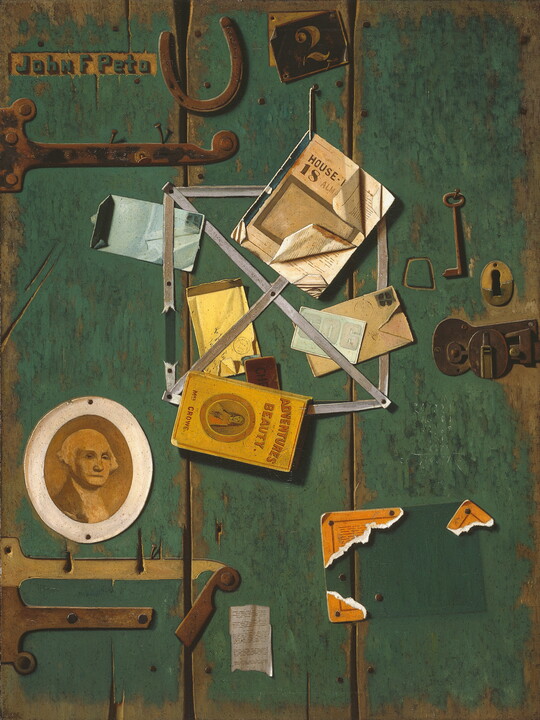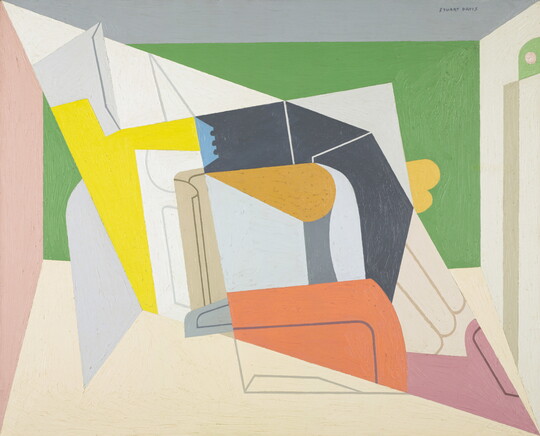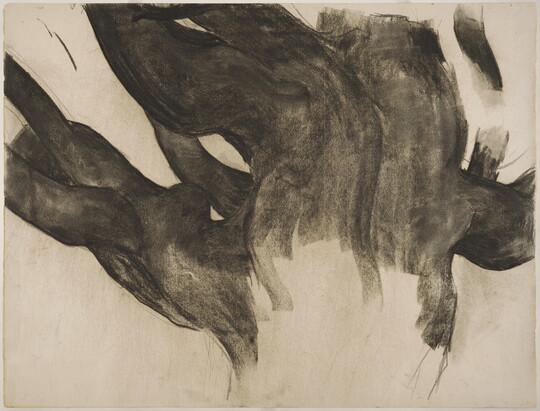



Artwork Images
Photo:
Controls
Edwin Booth
Object Details
-
Date
1890
-
Object Type
Paintings
-
Medium
Oil on canvas
-
Dimensions
87 1/2 x 61 3/4 in.
-
Inscriptions
Recto:
u.l. in black pigment: John S. Sargent
-
Credit Line
Amon Carter Museum of American Art, Fort Worth, Texas
-
Accession Number
2013.7
-
Copyright
Public domain
Object Description
Booth was one of the most famous actors in 19th-century America. Today, however, he is best known as the brother of John Wilkes Booth, the man who assassinated President Lincoln. Edwin was not involved in the assassination, but it damaged his reputation and forced him to temporarily give up acting. He eventually resumed his career, re-establishing himself through his acclaimed performances of the role of Shakespeare’s Hamlet.
This portrait was commissioned shortly after Edwin founded The Players, an elite social club in New York City. Sargent portrays Booth inside the club’s great hall, where he is flanked by a large fireplace. Facing the viewer, Booth stands as if about to deliver a monologue. Yet he seems preoccupied. His gaze is detached, and heavy shadows lid his eyes. Fading embers gleam in the fireplace, an allusion, perhaps, to the inevitable end of Booth’s storied career.
—Text taken from the Carter Handbook (2023)
Additional details
Location: On view
See more by John Singer Sargent
Tags
Video:
-
During his time, artist John Singer Sargent was highly regarded as one of the best, if not the best, portrait painter. Wealthy and famous individuals would often commission him to paint their picture, capturing their essence as well as some symbolic objects important to them. This artwork is no exception. In this 7-foot tall portrait, Sargent captures the older, White 5-foot, 7-inch actor Edwin Booth standing in front of a fireplace in a simple but large room.
Booth stands in the center of the painting in a contrapposto pose, most of his weight resting on the back, right foot. He has dark hair with streaks of gray on the sides and bushy eyebrows. He stares out past the viewer with a distant look in his eyes. His nose is small and his mouth is closed. Booth is cleanly shaven. He is dressed in a dark, gray and black three-piece suit and a white shirt with a black tie. His attitude is relaxed, but his stance expresses suppressed energy and nervous tension. His hands are at his waist; his thumbs are tucked into high-waisted pockets and his four fingers on each hand curl up, as if holding his pants up. His face and hands are the only part of his skin visible.
Sargent captures two sides of Booth. One side of his personality, the public persona, is conveyed on the left side of his body: the perfectly styled hair, nicely fitted and laid clothing, and extended foot out toward the viewer. His right side addresses the private side of his life; his unkempt gray hair, his untidy jacket lapel, and his angling away from the viewer suggests a messier and reclusive side that wouldn’t be known by those who saw him on stage.
Behind Booth is a muted, but symbolic background. On the right side of the painting and floor he stands on is a palette of flat, soft yellows, taupes, and browns. In the top, right corner is an ornately carved corbel, suggesting that it is holding a heavy mantel piece not depicted in the scene. Directly behind Booth and on the left half of the painting is a red fireplace and hearth. At the top left is an inscription penned by Booth in black cursive on the mantel. It reads:
GOODE FRENDE, FOR FRENDSHIP’S SAKE FOREBEARE
TO UTTER WHAT IS GOSSIP HERE
IN SOCIAL CHAT LEAST UNAWARES
THY TONGE OFFEND THY FELLOWE PLAIERS
Below the inscription is a medallion above the keystone of the fireplace that shows comedy and tragedy masks associated with theatre. Inside the dark fireplace is a fire that is close to burning out; only three bright orange embers glow. In front of the fireplace are muted gold, curvy, squat andirons; only a small part of the left one is included and the right one is mostly covered up by the Booth’s right leg.
This portrait of New York-based actor Edwin Booth is a wonderful example of Sargent’s talent to capture the sitter’s personality and interests.
-
What is the purpose of a portrait?
How might the background, clothes, facial expression, and body language depicted in a portrait reveal something about the sitter?
What strategies can an artist use to make a subject appear significant or impressive?
To what extent does the relevance of an icon remain outside of its own time?
How do works of art serve as records of history, even if they do not specifically reference historical events?
-
How would you describe the person you see here? Based upon these observations, what assumptions might be made about him?
Does this portrait include hints about the man’s profession? Direct students to look closely at the items in the background, including the medallion on the fireplace. For the ability to zoom-in closely, please see the Carter’s collection on Google Arts and Culture.
Edwin Booth was a celebrated American actor, but his theatrical achievements are often overshadowed by the infamy of his brother John Wilkes Booth, the assassin of President Abraham Lincoln. How does this information change the way you look at this portrait, if at all?
This painting was made in the twilight of Booth’s career, after his peak of fame and the assassination. Look closely at Booth’s facial expression, stance, and the setting he is placed in. What choices did the artist make to show Booth as an important figure nearing the end of his career?
-
Grades 9–12
Have students select a portrait of a present-day celebrity. Each student should answer the following questions. What do we learn about the subject from this portrait? What makes the portrait successful? What elements are timeless? What elements may be unfamiliar or dated to future generations?
All Levels
Activity 1
Have each student create a self-portrait to hang in a museum 100 years from now. Ask students to consider the following. What would they wear? How would they pose? What would be the setting of their portrait? Students may sketch their portrait or create a photographic self-portrait.Activity 2
On a large piece of paper have students draw or trace an outline of themselves (students may need to work in pairs or with a teacher for tracing). In the background, ask students to fill in the setting and/or include items that tell an autobiographical story.
Share Educator Resources
Amon Carter Disclaimer
This information is published from the Carter's collection database. Updates and additions based on research and imaging activities are ongoing. The images, titles, and inscriptions are products of their time and are presented here as documentation, not as a reflection of the Carter’s values. If you have corrections or additional information about this object please email us to help us improve our records.
Every effort has been made to accurately determine the rights status of works and their images. Please email us if you have further information on the rights status of a work contrary or in addition to the information in our records.
Related Works
-
Attention, Company!, 1878
William M. Harnett
Oil on canvas
1970.230
-
Sunrise, Yosemite Valley, ca. 1870
Albert Bierstadt
Oil on canvas
1966.1
-
The Buffalo Hunt [No. 39], 1919
Charles M. Russell
Oil on canvas
1961.146
-
Martha Graham - Letter to the World (Swirl), 1940
Barbara Morgan
Gelatin silver print
P1974.21.17
-
Zerogram, 2017
Ellen Carey
Dye coupler print
P2018.40
-
The Time Game, 2011
Jane Hammond
Gelatin silver print
P2011.29
-
A Closet Door, 1904-1906
John Frederick Peto
Oil on canvas
1983.158
-
Egg Beater No. 2, 1928
Stuart Davis
Oil on canvas
1996.9
-
Drawing No. 18, 1919
Georgia O'Keeffe
Charcoal on paper
1997.2



